While many travelers in Vietnam pass through Hue quickly, those who take the time to really immerse themselves in the culture and history of central Vietnam will not regret it. This guide will help travelers discover what to do in Hue Vietnam, so that they can have an epic vacation!
Hue History
Tucked down in the middle of Vietnam, Hue is a city that whispers stories of the past. Rising boldly as the Nguyen Dynasty’s imperial capital from 1802 to 1945, it permanently changed Vietnam’s rich tapestry of history.
Early in the 1600s, the nobleman Nguyen Hoang set the groundwork for the powerful Nguyen Lords, hence starting the tale of Hue. This opened the path for Nguyen Phuc Anh, who declared himself Emperor Gia Long and set Hue as the Nguyen Dynasty’s capital in 1802. During its time under imperial control, Hue developed into a vivid center of politics, art, and spirituality.
However, Hue has also faced challenges along the way. The city saw many wars, most famously the Vietnam War, which scarred its terrain. Many of Hue’s historical treasures survived despite these obstacles and subsequently became known as UNESCO World Heritage Sites. One outstanding example is the Hue Imperial Citadel, whose gates, temples, and great palaces provide a window into the glory of Vietnam’s imperial history.
Today, Hue serves as a living museum that bridges Vietnam’s vibrant present with its legendary past. The city invites guests to travel back in time with its historic pagodas, royal tombs, and calm Perfume River. Visitors may discover centuries-old landmarks, taste regional cuisine, and feel the ongoing influence of this ancient imperial city.
Best Time To Visit Hue
The ideal period to explore Hue falls between March and August, coinciding with the dry season. During these months, visitors will enjoy more favorable weather conditions, allowing them to appreciate the city’s outdoor attractions and cultural sites fully.
Cooler temperatures, with nice nights of about 18°C, are available during the wet season (September to February), but there are major downsides to this season as well. Heavy rainfall is common during this time, potentially disrupting your travel plans. The months of September to November are particularly risky, as they bring the highest chance of floods.
To make the most of your trip and avoid weather-related complications, planning your visit during the drier months is advisable. This way, you’ll have the opportunity to explore Hue’s imperial citadel, tranquil pagodas, and vibrant markets without the inconvenience of frequent downpours or potential flooding.
> Read More: When Is The Best Time To Go To Vietnam?
What To Do In Hue Vietnam
Explore Hue Imperial City
The Imperial City of Hue, is a monument to Vietnam’s illustrious past. The magnificent Imperial Citadel, an architectural wonder and former center of power during the Nguyen Dynasty, is now open to the general public for exploration.
Next to the citadel, where the magnificent Flag Tower offers breathtaking views of the surroundings, is the Forbidden Purple City, which reveals the personal lives of Vietnam’s last royal family despite its rundown condition.
Taken as a whole, these linked sites provide a detailed picture of the wealth and complexity of imperial Vietnam
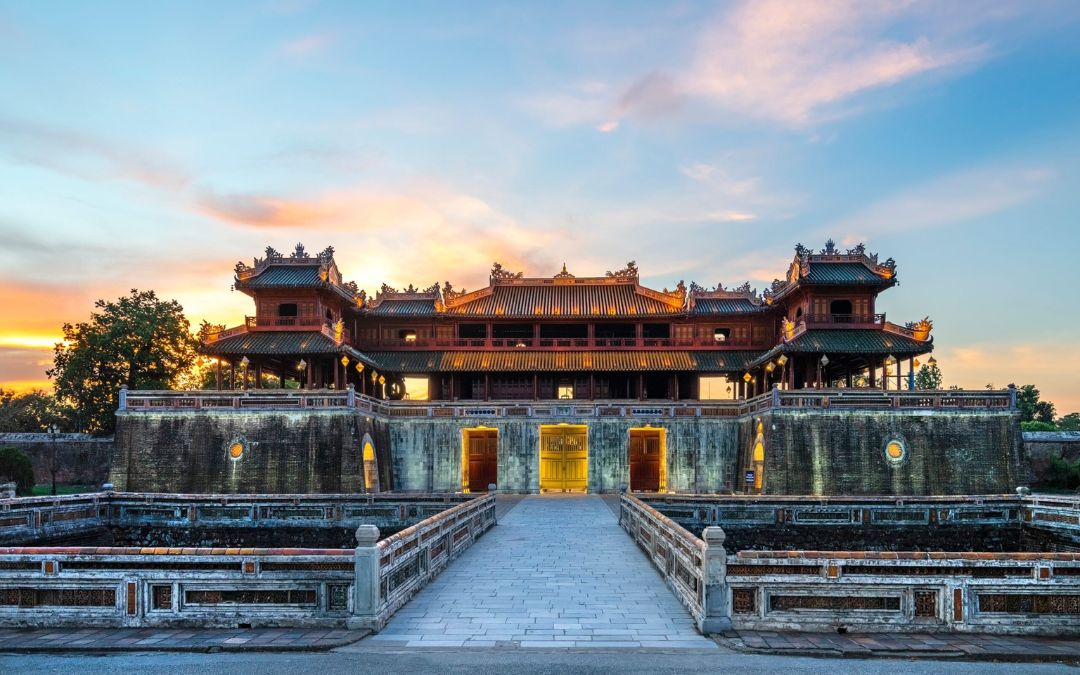
Visit Thien Mu Pagoda
Another important religious site in Hue is the Thien Mu Pagoda, which is on the banks of the Perfume River. One of Vietnam’s most recognizable landmarks, the seven-story “Heaven’s Gate” tower represents Buddhism and Vietnamese culture.
The pagoda complex includes subtle ponds, well-kept gardens, and many temples, creating an ideal setting for quiet contemplation. Exploring these grounds is a must-do in Hue, Vietnam, and it offers guests the opportunity to learn about the country’s architectural and Buddhist traditions.
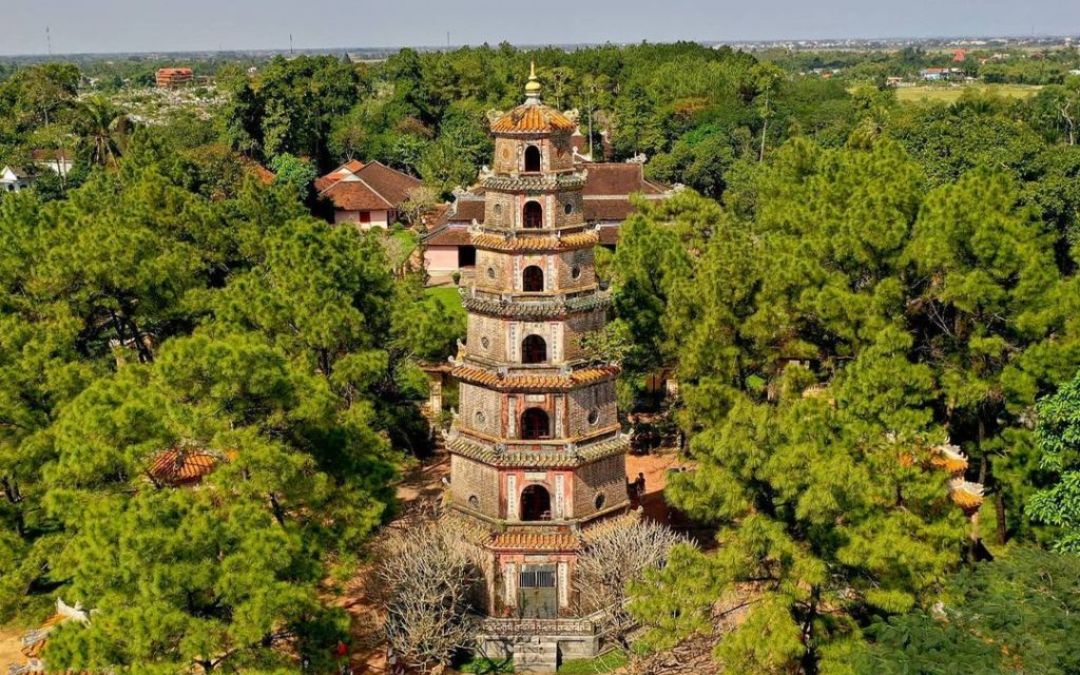
Cruise the Perfume River
Traveling down the Perfume River offers a one-of-a-kind view of Hue’s scenery and people. Tourists may get a new perspective on riverside life and historic sites on traditional wooden boats that cruise these waters. At dusk, the river trip takes on an extra magical quality as the setting sun paints the water and landscapes around it in a warm, golden glow.
In addition to showcasing the region’s stunning natural scenery, this experience emphasizes the river’s historical importance as a key transit route.
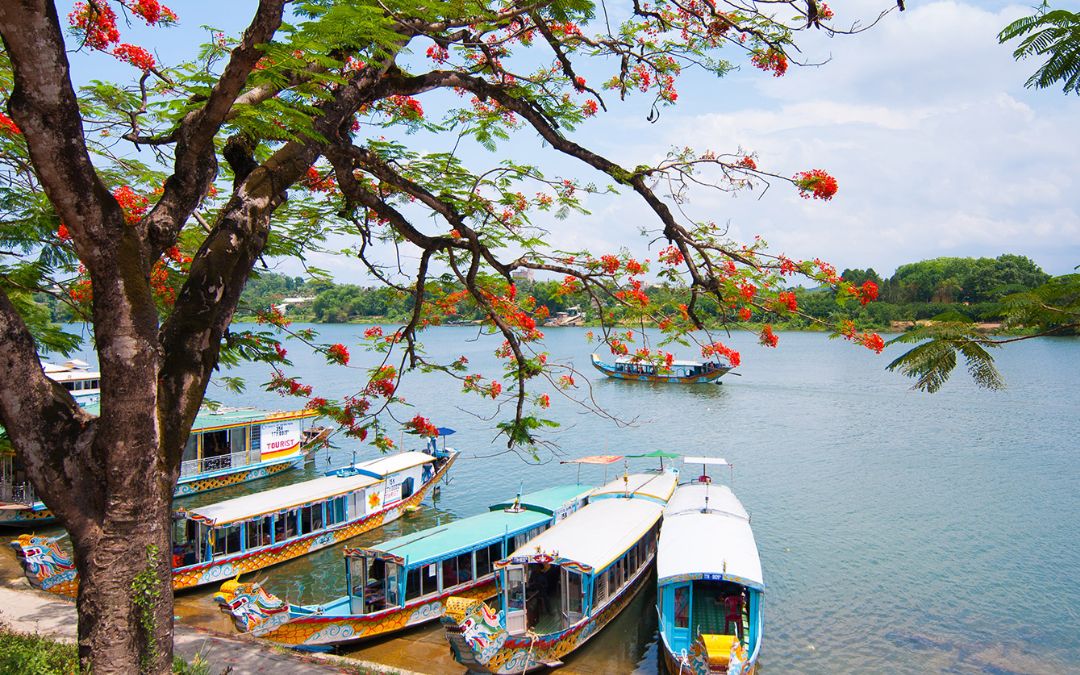
Relax at Thuan An Beach
Thuan An Beach provides a welcome diversion from the ancient sites that surround it. The beautiful beaches and crystal blue seas of this coastal location make it the perfect place to unwind and enjoy some outdoor activities.
Because of the beach’s closeness to nearby fishing villages, visitors may engage in cultural interactions, learn about the coastal people’s lifestyle, and combine relaxation with cultural discovery.
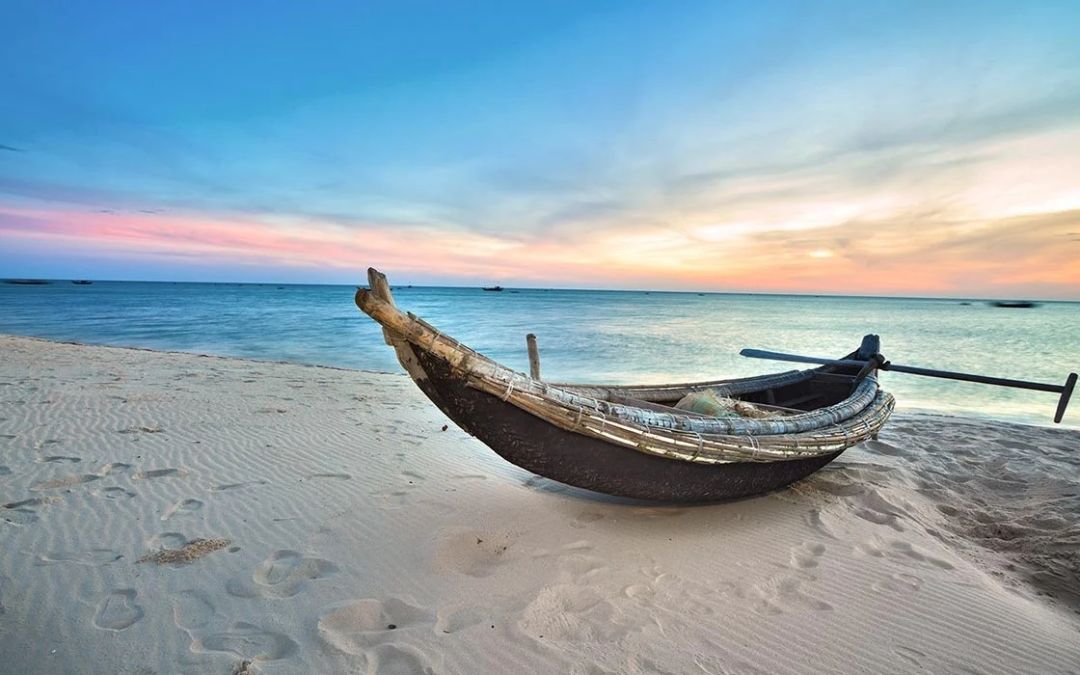
Shop at Dong Ba Market
One of Hue’s most important cultural and economic centers is Dong Ba Market. Tourists may get a feel for local life at this lively marketplace, which sells everything from fresh food to artisanal crafts.
In traditional Vietnamese trade, the market is characterized by lively haggling between sellers and buyers. As tourists navigate the bustling aisles, they can purchase unique trinkets and take part in the everyday economic activities that have sustained the town for decades.
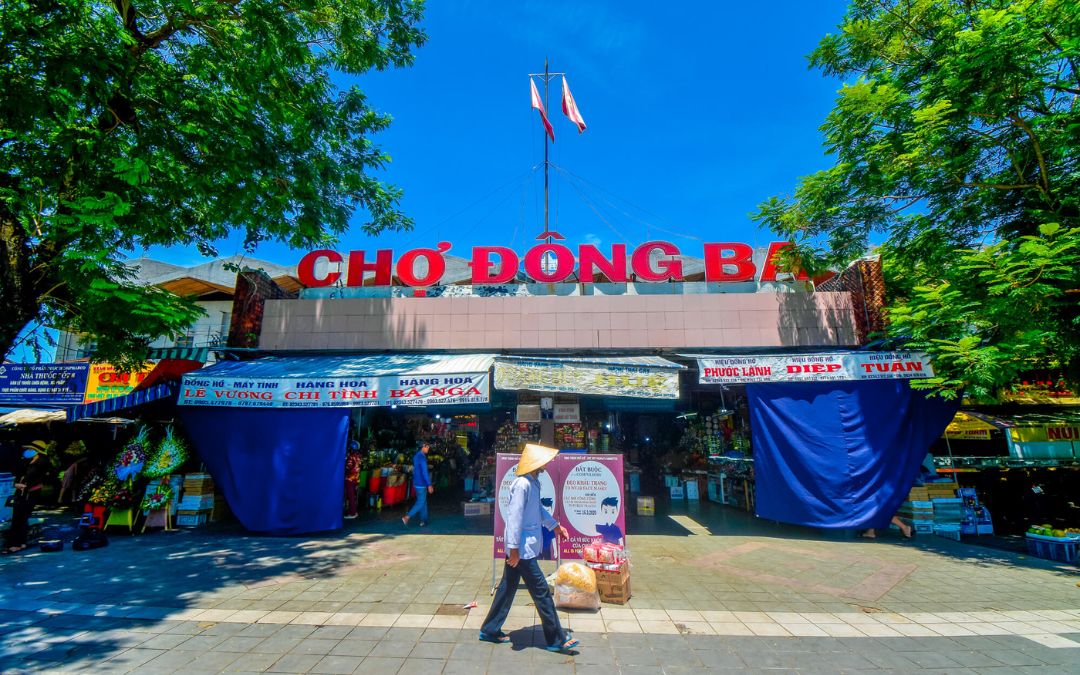
Discover Hue’s Cuisine
The essential component of Hue’s cultural character is its culinary heritage. The city’s food takes you on a culinary adventure through Vietnam’s past with its intricate tastes and imperial influences. Steamed rice cakes (banh beo) and spicy beef noodle soup (bun bo Hue) are two examples of the region’s famous cuisine.
Cooking workshops and culinary excursions abound for anybody interested in learning more about the local cuisine. By participating in these educational activities, tourists may learn more about the history and culture behind Hue’s signature dishes and develop a deeper respect for the region’s culinary traditions.
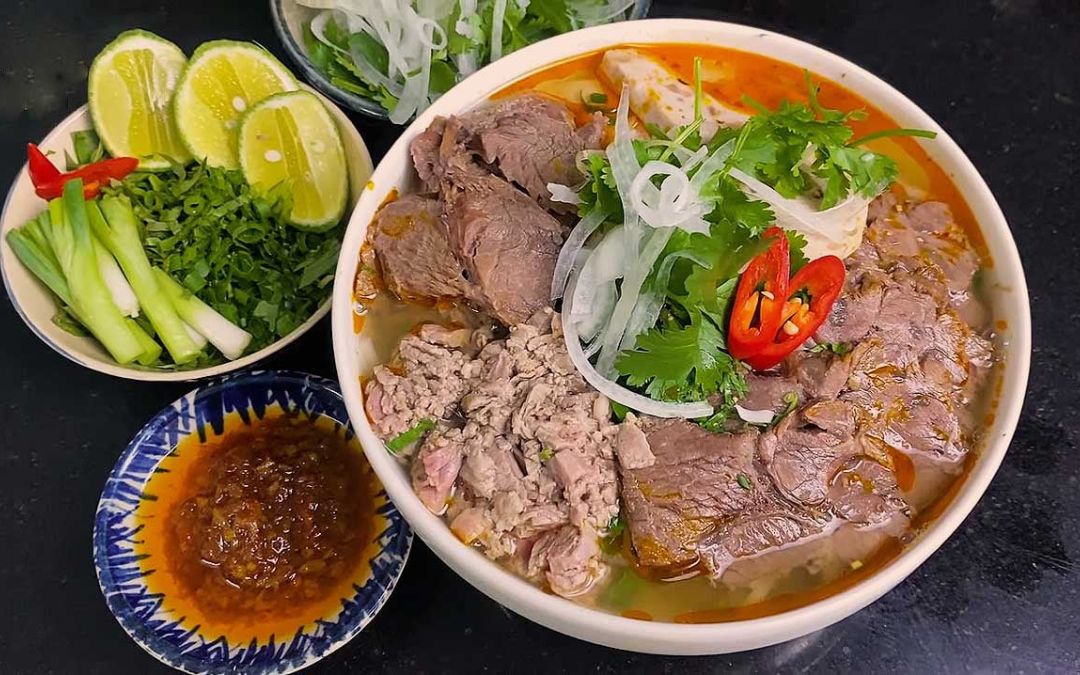
> Read More: 9 Local Food As Gifts To Buy In Vietnam
Visit the Imperial Museum of Hue
The Imperial Museum of Hue houses artifacts and information related to the Nguyen Dynasty. Its vast collection gives visitors a glimpse into imperial life through royal clothing, personal belongings, and official papers.
The museum’s galleries are structured according to several themes, which encompass subjects including artistic accomplishments, military history, and court traditions. The exhibitions have been thoughtfully selected so that visitors may learn about the historical context of Hue and the development of Vietnamese imperial culture.
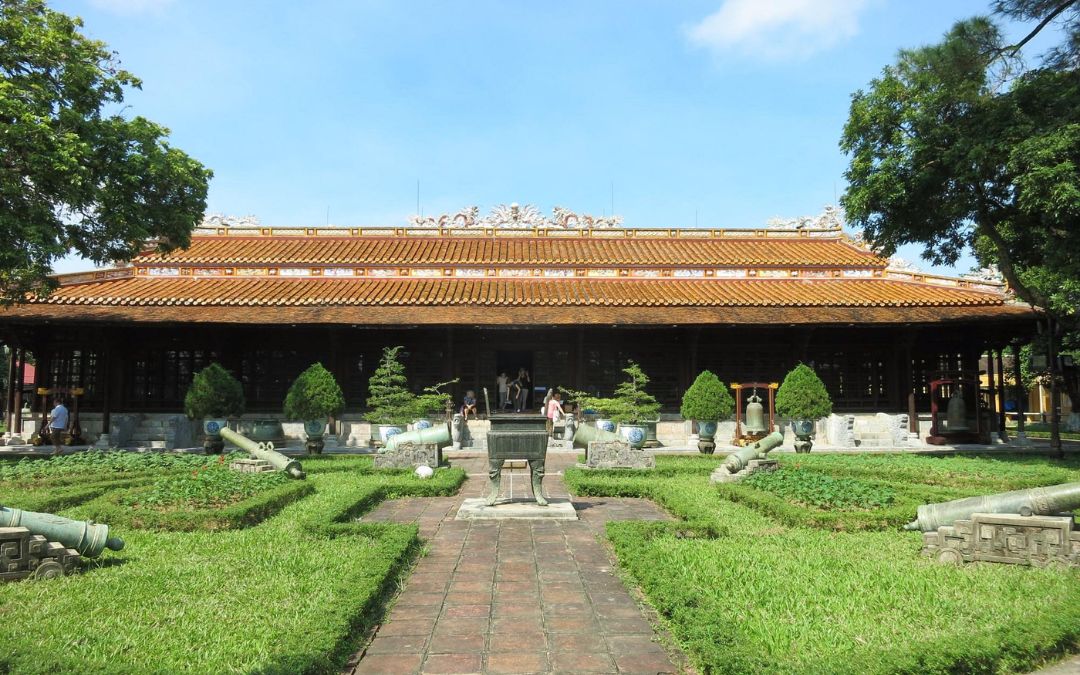
Participate in Traditional Festivals
Hue’s cultural calendar comes alive with a vibrant tapestry of traditional festivals:
- The most notable of which is the Hue Festival, which takes place every two years in April. Traditional Vietnamese arts and music are on display during this festival, which also features dragon boat racing and kite flying contests.
- On the fifth day of the fifth lunar month, there is a serious ceremony called the Ancestor Worship Ceremony. It is a time to honor the ancestors with rites and sacrifices.
- Notable festivals also include the Mid-Autumn Festival, the Vietnamese New Year (Tet Nguyen Dan), the commemoration of the Hung Kings, and the birthday of Buddha (Trung Nguyen Festival).
Attendees of these events have the rare chance to fully immerse themselves in Hue’s culture, from traditional performances to delectable local cuisine and the lively ambiance of the city’s rich history.
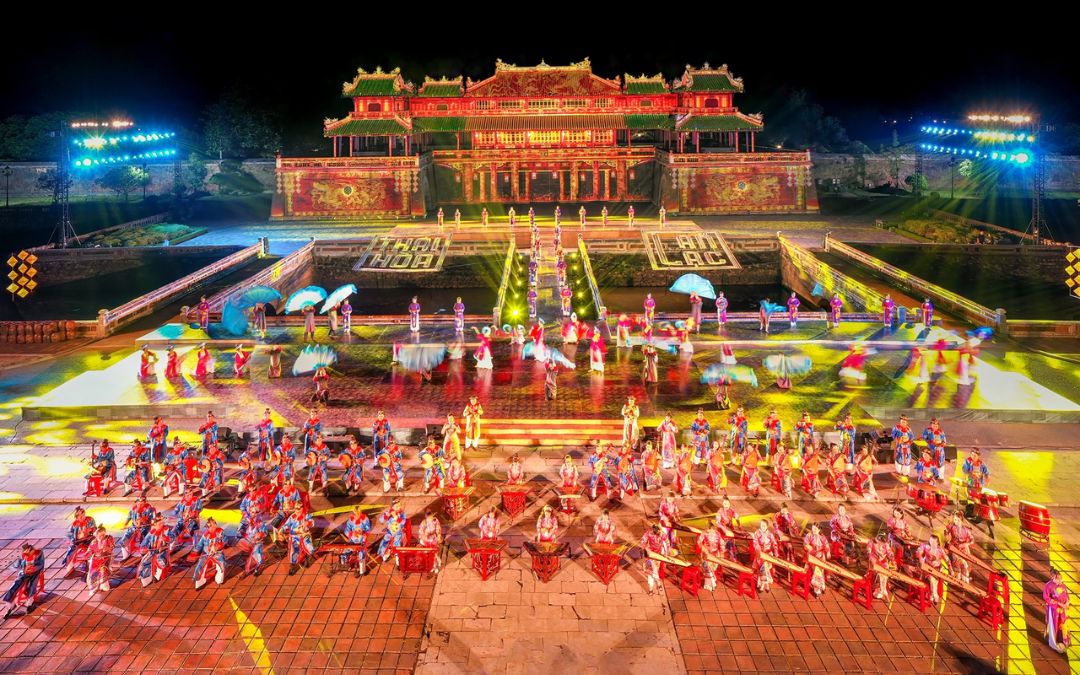
Wrapping Up
The captivating city of Hue is a living relic of Vietnam’s imperial past, standing as a testimony to its history. By participating in the activities listed below, you will undoubtedly gain a deep understanding of the profound nature of Hue and its ongoing significance in Vietnamese culture.











